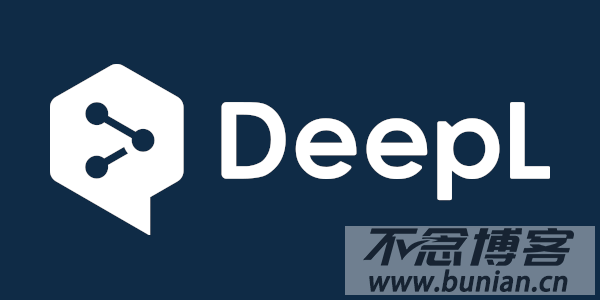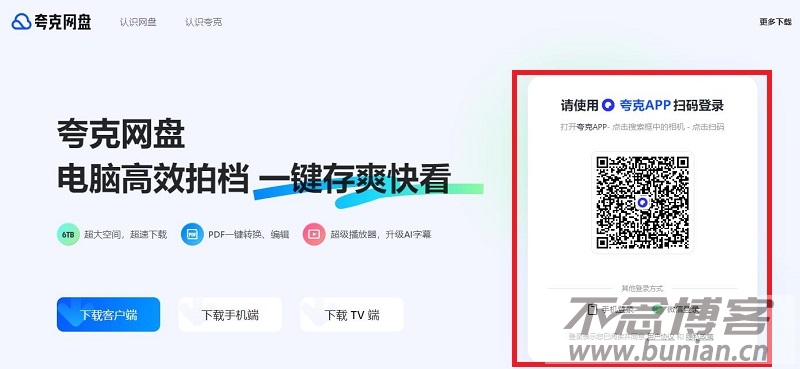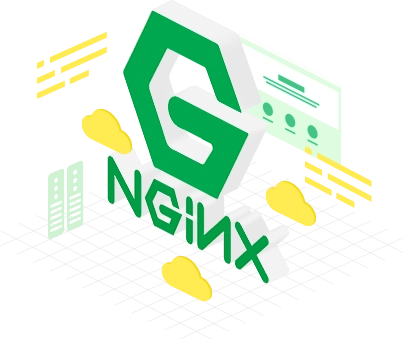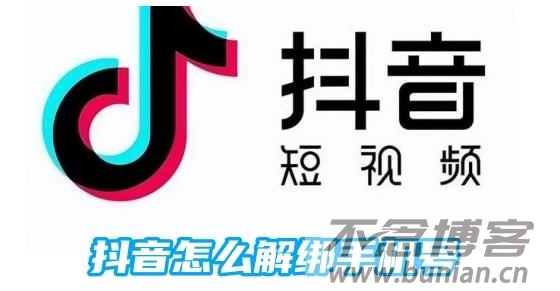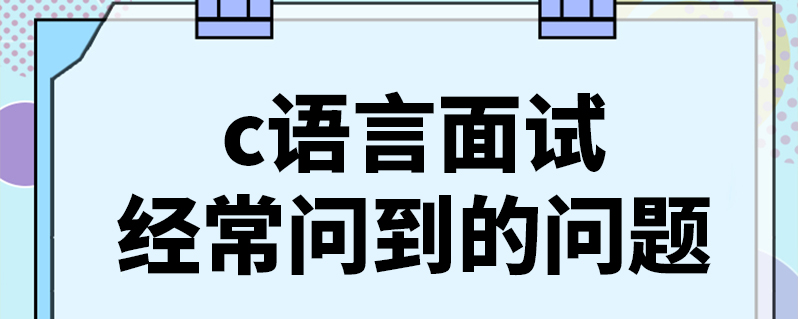本文分析 k8s controller 中 informer 启动的基本流程
不论是 k8s 自身组件,还是自己编写 controller,都需要通过 apiserver 监听 etcd 事件来完成自己的控制循环逻辑。
如何高效可靠进行事件监听,k8s 客户端工具包 client-go 提供了一个通用的 informer 包,通过 informer,可以方便和高效的进行 controller 开发。
informer 包提供了如下的一些功能:
1、本地缓存(store)
2、索引机制(indexer)
3、Handler 注册功能(eventHandler)
1、informer 架构
整个 informer 机制架构如下图(图片源自 Client-go):
![Kubernetes Informer基本原理 图片[1]-Kubernetes Informer基本原理-不念博客](https://www.bunian.cn/wp-content/uploads/2024/01/640-7.jpg)
可以看到这张图分为上下两个部分,上半部分由 client-go 提供,下半部分则是需要自己实现的控制循环逻辑
本文主要分析上半部分的逻辑,包括下面几个组件:
1.1、Reflector:
从图上可以看到 Reflector 是一个和 apiserver 交互的组件,通过 list 和 watch api 将资源对象压入队列
1.2、DeltaFifo:
DeltaFifo的结构体示意如下:
type DeltaFIFO struct {
...
// We depend on the property that items in the s et are in
// the queue and vice versa, and that all Deltas in this
// map have at least one Delta.
items map[string]Deltas
queue []string
...
}主要分为两部分,fifo 和 delta
(1)fifo:先进先出队列
对应结构体中的 queue,结构体示例如下:
[default/centos-fd77b5886-pfrgn, xxx, xxx](2)delta:对应结构体中的items,存储了资源对象并且携带了资源操作类型的一个 map,结构体示例如下:
map:{"default/centos-fd77b5886-pfrgn":[{Replaced &Pod{ObjectMeta: ${pod参数}], "xxx": [{},{}]}消费者从 queue 中 pop 出对象进行消费,并从 items 获取具体的消费操作(执行动作 Update/Deleted/Sync,和执行的对象 object spec)
1.3、Indexer:
client-go 用来存储资源对象并自带索引功能的本地存储,deltaFIFO 中 pop 出的对象将存储到 Indexer。
indexer 与 etcd 集群中的数据保持一致,从而 client-go 可以直接从本地缓存获取资源对象,减少 apiserver 和 etcd 集群的压力。
2、一个基本例子
func main() {
stopCh := make(chan struct{})
defer close(stopCh)
// (1)New a k8s clientset
masterUrl := "172.27.32.110:8080"
config, err := clientcmd.BuildConfigFromFlags(masterUrl, "")
if err != nil {
klog.Errorf("BuildConfigFromFlags err, err: %v", err)
}
clientset, err := k.NewForConfig(config)
if err != nil {
klog.Errorf("Get clientset err, err: %v", err)
}
// (2)New a sharedInformers factory
sharedInformers := informers.NewSharedInformerFactory(clientset, defaultResync)
// (3)Register a informer
// f.informers[informerType] = informer,
// the detail for informer is build in NewFilteredPodInformer()
podInformer := sharedInformers.Core().V1().Pods().Informer()
// (4)Register event handler
podInformer.AddEventHandler(cache.ResourceEventHandlerFuncs{
AddFunc: func(obj interface{}) {
mObj := obj.(v1.Object)
klog.Infof("Get new obj: %v", mObj)
klog.Infof("Get new obj name: %s", mObj.GetName())
},
})
// (5)Start all informers
sharedInformers.Start(stopCh)
// (6)A cronjob for cache sync
if !cache.WaitForCacheSync(stopCh, podInformer.HasSynced) {
klog.Infof("Cache sync fail!")
}
// (7)Use lister
podLister := sharedInformers.Core().V1().Pods().Lister()
pods, err := podLister.List(labels.Everything())
if err != nil {
klog.Infof("err: %v", err)
}
klog.Infof("len(pods), %d", len(pods))
for _, v := range pods {
klog.Infof("pod: %s", v.Name)
}
<- stopChan
}上面就是一个简单的 informer 的使用例子,整个过程如上述几个步骤,着重说一下(2)、(3)、(4)、(5)四个步骤
3、流程分析
3.1、New a sharedInformers factory
sharedInformers := informers.NewSharedInformerFactory(clientset, defaultResync)
factory := &sharedInformerFactory{
client: client,
namespace: v1.NamespaceAll,
defaultResync: defaultResync,
informers: make(map[reflect.Type]cache.SharedIndexInformer),
startedInformers: make(map[reflect.Type]bool),
customResync: make(map[reflect.Type]time.Duration),
}这个过程就是创建一个 informer 的工厂 sharedInformerFactory,sharedInformerFactory 中有一个 informers 对象,里面是一个 informer 的 map,sharedInformerFactory 是为了防止过多的重复 informer 监听 apiserver,导致 apiserver 压力过大,在同一个服务中,不同的 controller 使用同一个 informer
3.2、Register a informer
这个过程主要是生成和注册 informer 到 sharedInformerFactory
podInformer := sharedInformers.Core().V1().Pods().Informer()
func (f *podInformer) Informer() cache.SharedIndexInformer {
return f.factory.InformerFor(&corev1.Pod{}, f.defaultInformer)
}
### f.factory.InformerFor:
### 注册 informer
func (f *sharedInformerFactory) InformerFor(obj runtime.Object, newFunc internalinterfaces.NewInformerFunc) cache.SharedIndexInformer {
...
informer = newFunc(f.client, resyncPeriod)
f.informers[informerType] = informer
return informer
}
### f.defaultInformer:
### 生成 informer
func (f *podInformer) defaultInformer(client k.Interface, resyncPeriod time.Duration) cache.SharedIndexInformer {
return NewFilteredPodInformer(client, f.namespace, resyncPeriod, cache.Indexers{cache.NamespaceIndex: cache.MetaNamespaceIndexFunc}, f.tweakListOptions)
}
func NewFilteredPodInformer(client k.Interface, namespace string, resyncPeriod time.Duration, indexers cache.Indexers, tweakListOptions internalinterfaces.TweakListOptionsFunc) cache.SharedIndexInformer {
return cache.NewSharedIndexInformer(
&cache.ListWatch{
ListFunc: func(options metav1.ListOptions) (runtime.Object, error) {
if tweakListOptions != nil {
tweakListOptions(&options)
}
return client.CoreV1().Pods(namespace).List(context.TODO(), options)
},
WatchFunc: func(options metav1.ListOptions) (watch.Interface, error) {
if tweakListOptions != nil {
tweakListOptions(&options)
}
return client.CoreV1().Pods(namespace).Watch(context.TODO(), options)
},
},
&corev1.Pod{},
resyncPeriod,
indexers,
)
}
### cache.NewSharedIndexInformer:
func NewSharedIndexInformer(lw ListerWatcher, exampleObject runtime.Object, defaultEventHandlerResyncPeriod time.Duration, indexers Indexers) SharedIndexInformer {
realClock := &clock.RealClock{}
sharedIndexInformer := &sharedIndexInformer{
processor: &sharedProcessor{clock: realClock},
indexer: NewIndexer(DeletionHandlingMetaNamespaceKeyFunc, indexers),
listerWatcher: lw,
objectType: exampleObject,
resyncCheckPeriod: defaultEventHandlerResyncPeriod,
defaultEventHandlerResyncPeriod: defaultEventHandlerResyncPeriod,
cacheMutationDetector: NewCacheMutationDetector(fmt.Sprintf("%T", exampleObject)),
clock: realClock,
}
return sharedIndexInformer
}首先通过 f.defaultInformer 方法生成 informer,然后通过 f.factory.InformerFor 方法,将 informer 注册到 sharedInformerFactory
3.3、Register event handler
这个过程展示如何注册一个回调函数,以及如何触发这个回调函数
### podInformer.AddEventHandler:
func (s *sharedIndexInformer) AddEventHandler(handler ResourceEventHandler) {
s.AddEventHandlerWithResyncPeriod(handler, s.defaultEventHandlerResyncPeriod)
}
func (s *sharedIndexInformer) AddEventHandlerWithResyncPeriod(handler ResourceEventHandler, resyncPeriod time.Duration) {
...
listener := newProcessListener(handler, resyncPeriod, determineResyncPeriod(resyncPeriod, s.resyncCheckPeriod), s.clock.Now(), initialBufferSize)
if !s.started {
s.processor.addListener(listener)
return
}
...
}
### s.processor.addListener(listener):
func (p *sharedProcessor) addListener(listener *processorListener) {
p.addListenerLocked(listener)
if p.listenersStarted {
p.wg.Start(listener.run)
p.wg.Start(listener.pop)
}
}
### listener.run:
func (p *processorListener) run() {
// this call blocks until the channel is closed. When a panic happens during the notification
// we will catch it, **the offending item will be skipped!**, and after a short delay (one second)
// the next notification will be attempted. This is usually better than the alternative of never
// delivering again.
stopCh := make(chan struct{})
wait.Until(func() {
for next := range p.nextCh {
switch notification := next.(type) { // 通过next结构体本身的类型来判断事件类型
case updateNotification:
p.handler.OnUpdate(notification.oldObj, notification.newObj)
case addNotification:
p.handler.OnAdd(notification.newObj)
case deleteNotification:
p.handler.OnDelete(notification.oldObj)
default:
utilruntime.HandleError(fmt.Errorf("unrecognized notification: %T", next))
}
}
// the only way to get here is if the p.nextCh is empty and closed
close(stopCh)
}, 1*time.Second, stopCh)
}
### listener.pop:
func (p *processorListener) pop() {
var nextCh chan<- interface{}
var notification interface{}
for {
select {
case nextCh <- notification:
// Notification dispatched
var ok bool
notification, ok = p.pendingNotifications.ReadOne()
if !ok { // Nothing to pop
nextCh = nil // Disable this select case
}
case notificationToAdd, ok := <-p.addCh:
if !ok {
return
}
if notification == nil { // No notification to pop (and pendingNotifications is empty)
// Optimize the case - skip adding to pendingNotifications
notification = notificationToAdd
nextCh = p.nextCh
} else { // There is already a notification waiting to be dispatched
p.pendingNotifications.WriteOne(notificationToAdd)
}
}
}
}
这个过程总结就是:
(1)AddEventHandler 到 sharedProcessor,注册事件回调函数到 sharedProcessor
(2)listener pop 方法里会监听 p.addCh,通过 nextCh = p.nextCh 将 addCh 将事件传递给 p.nextCh
(3)listener run 方法里会监听 p.nextCh,收到信号之后,判断是属于什么类型的方法,并且执行前面注册的 Handler
所以后面需要关注当资源对象发生变更时,是如何将变更信号给 p.addCh,进一步触发回调函数的
3.4、Start all informers
通过 sharedInformers.Start(stopCh)启动所有的 informer,代码如下:
// Start initializes all requested informers.
func (f *sharedInformerFactory) Start(stopCh <-chan struct{}) {
for informerType, informer := range f.informers {
if !f.startedInformers[informerType] {
go informer.Run(stopCh)
f.startedInformers[informerType] = true
}
}
}我们的例子中其实就只启动了 PodInformer,接下来看到 podInformer 的 Run 方法做了什么
### go informer.Run(stopCh):
func (s *sharedIndexInformer) Run(stopCh <-chan struct{}){
defer utilruntime.HandleCrash()
fifo := NewDeltaFIFOWithOptions(DeltaFIFOOptions{ // Deltafifo
KnownObjects: s.indexer,
EmitDeltaTypeReplaced: true,
})
cfg := &Config{
Queue: fifo, // Deltafifo
ListerWatcher: s.listerWatcher, // listerWatcher
ObjectType: s.objectType,
FullResyncPeriod: s.resyncCheckPeriod,
RetryOnError: false,
ShouldResync: s.processor.shouldResync,
// HandleDeltas, added to process, and done in processloop
Process: s.HandleDeltas,
WatchErrorHandler: s.watchErrorHandler,
}
func() {
...
s.controller = New(cfg)
...
}
s.controller.Run(stopCh)
}
### s.controller.Run(stopCh)
func (c *controller) Run(stopCh <-chan struct{}) {
r := NewReflector(
c.config.ListerWatcher,
c.config.ObjectType,
c.config.Queue,
c.config.FullResyncPeriod,
)
c.reflector = r
// Run reflector
wg.StartWithChannel(stopCh, r.Run)
// Run processLoop, pop from deltafifo and do ProcessFunc,
// ProcessFunc is the s.HandleDeltas before
wait.Until(c.processLoop, time.Second, stopCh)
}可以看到上面的逻辑首先生成一个 DeltaFifo,然后接下来的逻辑分为两块,生产和消费:
(1)生产—r.Run:
主要的逻辑就是利用 list and watch 将资源对象包括操作类型压入队列 DeltaFifo
#### r.Run:
func (r *Reflector) Run(stopCh <-chan struct{}) {
// 执行listAndWatch
if err := r.ListAndWatch(stopCh);
}
// 执行ListAndWatch流程
func (r *Reflector)ListAndWatch(stopCh <-chan struct{}) error{
// 1、list:
// (1)、list pods, 实际调用的是podInformer里的ListFunc方法,
// client.CoreV1().Pods(namespace).List(context.TODO(), options)
r.listerWatcher.List(opts)
// (2)、获取资源版本号,用于watch
resourceVersion = listMetaInterface.GetResourceVersion()
// (3)、数据转换,转换成列表
items, err := meta.ExtractList(list)
// (4)、将资源列表中的资源对象和版本号存储到DeltaFifo中
r.syncWith(items, resourceVersion);
// 2、watch,无限循环去watch apiserver,当watch到事件的时候,执行watchHandler将event事件压入fifo
for {
// (1)、watch pods, 实际调用的是podInformer里的WatchFunc方法,
// client.CoreV1().Pods(namespace).Watch(context.TODO(), options)
w, err := r.listerWatcher.Watch(options)
// (2)、watchHandler
// watchHandler watches pod,更新DeltaFifo信息,并且更新resourceVersion
if err := r.watchHandler(start, w, &resourceVersion, resyncerrc, stopCh);
}
}
### r.watchHandler
// watchHandler watches w and keeps *resourceVersion up to date.
func (r *Reflector) watchHandler(start time.Time, w watch.Interface, resourceVersion *string, errc chan error, stopCh <-chan struct{}) error {
...
loop:
for {
select {
case event, ok := <-w.ResultChan():
newResourceVersion := meta.GetResourceVersion()
switch event.Type {
case watch.Added:
err := r.store.Add(event.Object) // Add event to srore, store的具体方法在fifo中
if err != nil {
utilruntime.HandleError(fmt.Errorf("%s: unable to add watch event object (%#v) to store: %v", r.name, event.Object, err))
}
...
}
*resourceVersion = newResourceVersion
r.setLastSyncResourceVersion(newResourceVersion)
eventCount++
}
}
...
}
### r.store.Add:
## 即为deltaFifo的add方法:
func (f *DeltaFIFO) Add(obj interface{}) error {
...
return f.queueActionLocked(Added, obj)
...
}
func (f *DeltaFIFO) queueActionLocked(actionType DeltaType, obj interface{}) error {
id, err := f.KeyOf(obj)
if err != nil {
return KeyError{obj, err}
}
newDeltas := append(f.items[id], Delta{actionType, obj})
newDeltas = dedupDeltas(newDeltas)
if len(newDeltas) > 0 {
if _, exists := f.items[id]; !exists {
f.queue = append(f.queue, id)
}
f.items[id] = newDeltas
f.cond.Broadcast() // 通知所有阻塞住的消费者
}
...
return nil
}
(2)消费—c.processLoop:
消费逻辑就是从 DeltaFifo pop 出对象,然后做两件事情:(1)触发前面注册的 eventhandler (2)更新本地索引缓存 indexer,保持数据和 etcd 一致
func (c *controller) processLoop() {
for {
obj, err := c.config.Queue.Pop(PopProcessFunc(c.config.Process))
}
}
### Queue.Pop:
## Queue.Pop是一个带有处理函数的pod方法,首先先看Pod逻辑,即为deltaFifo的pop方法:
func (f *DeltaFIFO) Pop(process PopProcessFunc) (interface{}, error) {
for { // 无限循环
for len(f.queue) == 0 {
f.cond.Wait() // 阻塞直到生产端broadcast方法通知
}
id := f.queue[0]
item, ok := f.items[id]
delete(f.items, id)
err := process(item) // 执行处理方法
if e, ok := err.(ErrRequeue); ok {
f.addIfNotPresent(id, item) // 如果处理失败的重新加入到fifo中重新处理
err = e.Err
}
return item, err
}
}
### c.config.Process:
## c.config.Process是在初始化controller的时候赋值的,即为前面的s.HandleDeltas
### s.HandleDeltas:
func (s *sharedIndexInformer) HandleDeltas(obj interface{}) error {
s.blockDeltas.Lock()
defer s.blockDeltas.Unlock()
// from oldest to newest
for _, d := range obj.(Deltas) {
switch d.Type {
case Sync, Replaced, Added, Updated:
s.cacheMutationDetector.AddObject(d.Object)
if old, exists, err := s.indexer.Get(d.Object); err == nil && exists {
if err := s.indexer.Update(d.Object); err != nil {
return err
}
isSync := false
switch {
case d.Type == Sync:
// Sync events are only propagated to listeners that requested resync
isSync = true
case d.Type == Replaced:
if accessor, err := meta.Accessor(d.Object); err == nil {
if oldAccessor, err := meta.Accessor(old); err == nil {
// Replaced events that didn't change resourceVersion are treated as resync events
// and only propagated to listeners that requested resync
isSync = accessor.GetResourceVersion() == oldAccessor.GetResourceVersion()
}
}
}
s.processor.distribute(updateNotification{oldObj: old, newObj: d.Object}, isSync)
} else {
if err := s.indexer.Add(d.Object); err != nil {
return err
}
s.processor.distribute(addNotification{newObj: d.Object}, false)
}
case Deleted:
if err := s.indexer.Delete(d.Object); err != nil {
return err
}
s.processor.distribute(deleteNotification{oldObj: d.Object}, false)
}
}
return nil
}可以看到上面主要执行两部分逻辑:
s.processor.distribute
#### s.processor.distribute:
### 例如新增通知:s.processor.distribute(addNotification{newObj: d.Object}, false)
### 其中addNotification就是add类型的通知,后面会通过notification结构体的类型来执行不同的eventHandler
func (p *sharedProcessor) distribute(obj interface{}, sync bool) {
p.listenersLock.RLock()
defer p.listenersLock.RUnlock()
if sync {
for _, listener := range p.syncingListeners {
listener.add(obj)
}
} else {
for _, listener := range p.listeners {
listener.add(obj)
}
}
}
func (p *processorListener) add(notification interface{}) {
p.addCh <- notification // 新增notification到addCh
}这里 p.addCh 对应到前面说的关注对象 p.addCh,processorListener 收到 addCh 信号之后传递给 nextCh,然后通过 notification 结构体的类型来执行不同的 eventHandler
s.indexer 的增删改:
这个就是本地数据的缓存和索引,自定义控制逻辑里面会通过 indexer 获取操作对象的具体参数,这里就不展开细讲了。
4、总结
至此一个 informer 的 client-go 部分的流程就走完了,可以看到启动 informer 主要流程就是:
1、Reflector ListAndWatch:
(1)通过一个 reflector run 起来一个带有 list 和 watch api 的 client
(2)list 到的 pod 列表通过 DeltaFifo 存储,并更新最新的 ResourceVersion
(3)继续监听 pod,监听到的 pod 操作事件继续存储到 DeltaFifo 中
2、DeltaFifo 生产和消费:
(1)生产:list and watch 到的事件生产压入队列 DeltaFifo
(2)消费:执行注册的 eventHandler,并更新本地 indexer
所以 informer 本质其实就是一个通过 deltaFifo 建立生产消费机制,并且带有本地缓存和索引,以及可以注册回调事件的 apiServer 的客户端库。
